| Japanese | English |
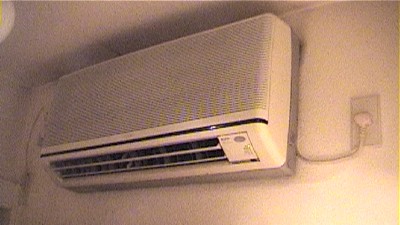
Air conditioner is one of the noise sources in the living room. To measure how much loud is the air conditioner noise, measurement should be performed during and after the operation of the air conditioner. This time, air conditioner is stopped and the background noise is measured first.
Living room noise is "a noisy sound in spite of the small sound level." So, the measurement should be performed carefully. The characteristic of the measurement system itself is also important. Standard sound level meter (we use ACO Sound level meter TYPE6146) can measure a high frequency only up to 8 kHz. RA (real time analyzer) can measure up to 20 kHz, if the high grade measurement microphone is used.
Noise measurement is usually performed with the A-weighting filter. When measuring a low frequency noise, however, it is also measured by FLAT (with no frequency weighting). The compensation value for the A-weighting filter is -50dB around 20Hz as compared with FLAT condition.
All the functions for measuring noise (spectrum analyzer, octave band analyzer, frequency weighting filter) are equipped with the software. We can measure noise with one notebook PC and a few accessories (microphones, sound card, etc).
Air conditioner
| PUROO SANYO FUZZY TWIN INVERTER SAP322VR Split type indoor unit SANYO Electric Co., Ltd. 100V 50/60Hz (50Hz in Tokyo) Manufacturer's serial number: 0026606 |
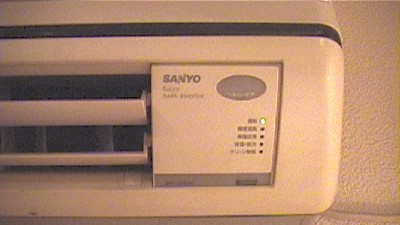 |
Personal Computer
SONY VAIO PCG-R505R/DK notebook PC
Operating System
Microsoft Windows2000 Professional
External microphones
SONY ECM-MS907 stereo electric condenser microphone
About the room
The room to be measured is on the fifth floor of the apartment. Size of the room is about 13 m2. Window is a double sash, and three walls are sound isolated.
1/3 octave analysis at the time of a non-signal (FLAT)
This is the internal noise of the sound circuit of VAIO notebook PC. There are
no significant peak frequency.
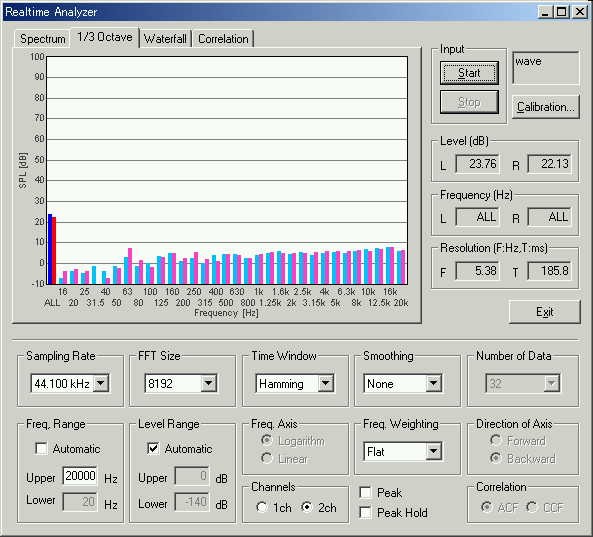
Power spectrum at the time of a non-signal (FLAT)
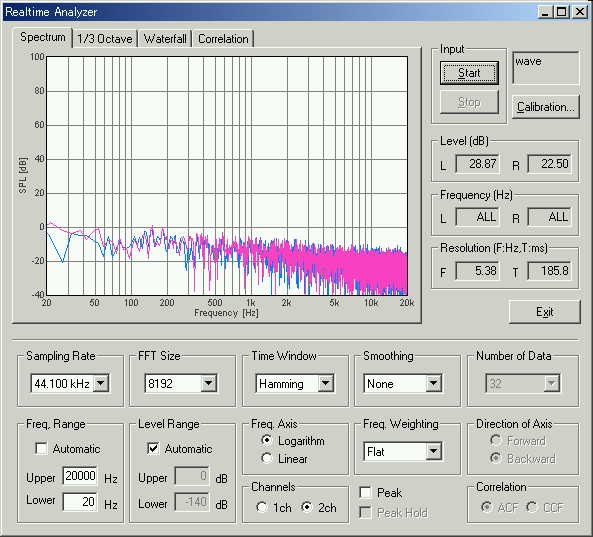
1/3 octave analysis at the time of a non-signal (A-weighting)
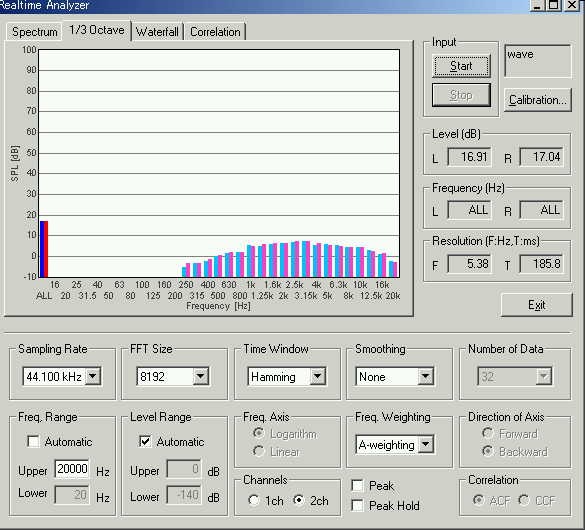
Power spectrum at the time of a non-signal (A-weighting)
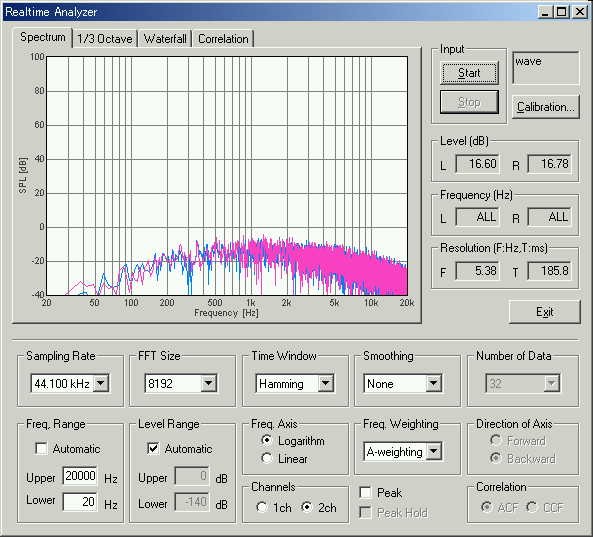
According to the sound level meter, the background noise of the room is 32.5
dBA.
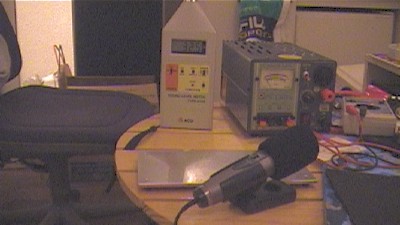
1/3 octave analysis of the background noise (FLAT)
This is a sound of the quiet room captured by the microphone. Input signal is amplified about 15.5 dB to raise the SNR (signal to noise ratio)
of a measurement system. Actual background noise level is 38.5dB. The difference
of this value and the sound level meter reading is due to the frequency
weighting.
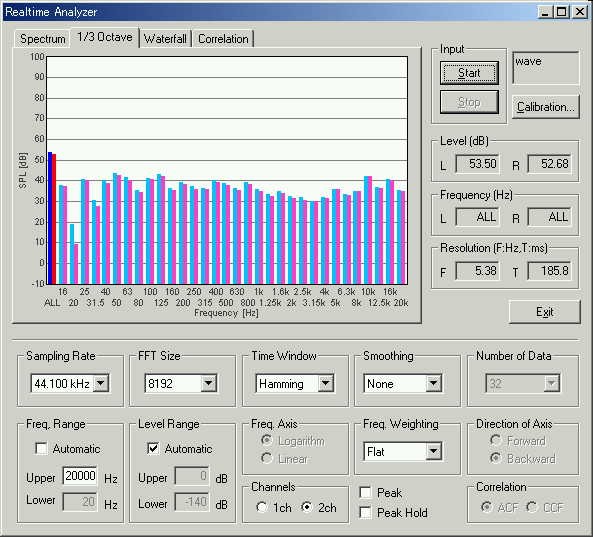
The power spectrum of the background noise (FLAT)
Small peak can be seen around 40-55 Hz.
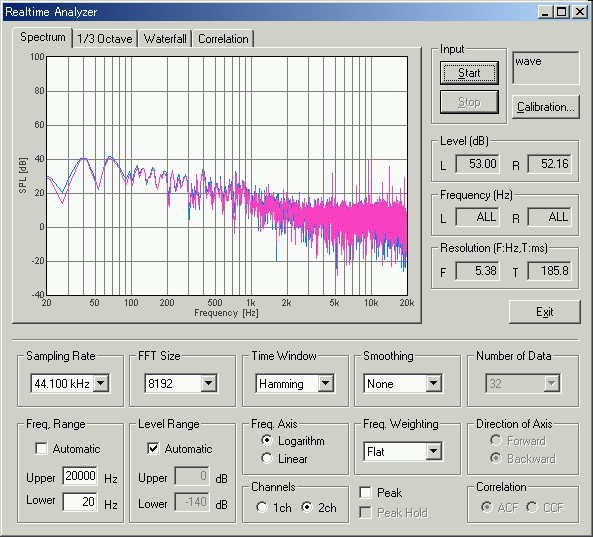
This software can measure sound and display the calculation result in real time. By using the sound recorder, it is also possible to replay sound and perform the spectrum analysis and 1/3 octave band analysis later. To prepare pictures for making a document, Windows' screen copy function is used.
1/3 octave analysis of the background noise (A-weighting)
As noted above, the input
signal is amplified about 15.5 dB to raise the SNR (signal to noise ratio) of
the measurement system. Now, it is measured with the A-weighting filter. So the
measured value for All-pass (48 dB) matches the sound level meter reading (32.5
dB) plus 15.5 dB.
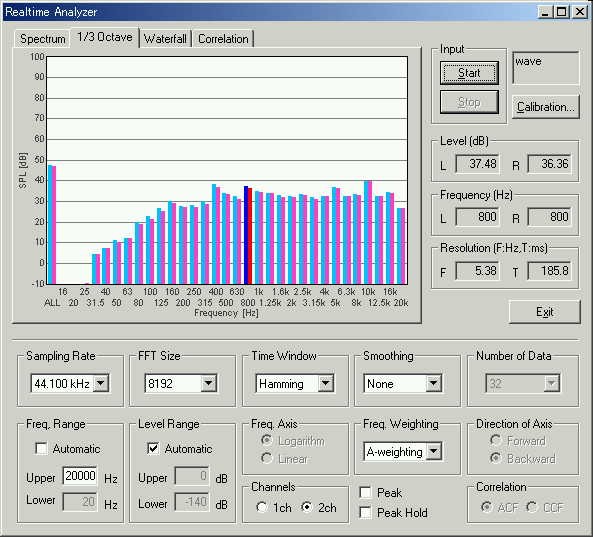
The power spectrum of the background noise (A-weighting)
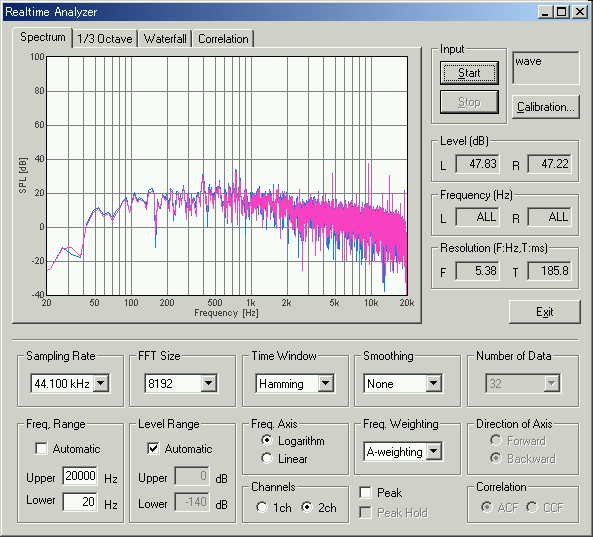
Peaks can be seen at 400 Hz and 750 Hz, but it seems that the room is quiet and that there is no serious problem in this measurement.
August 2002 by M.Sakurai